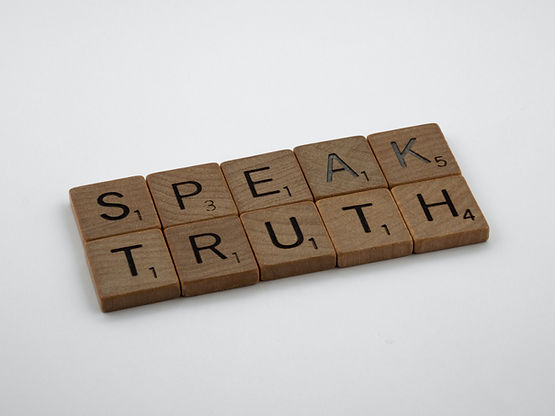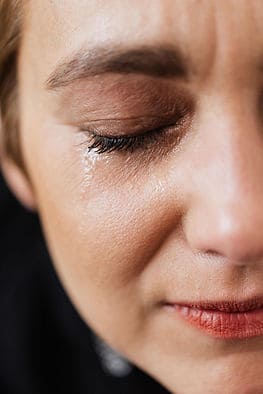Menopause Symptoms and Endurance Athletes: How to Use the Pain Cave and Buddhist Philosophy to Find Freedom
There’s a moment in every endurance athlete’s journey when they enter the pain cave—that space where discomfort, exhaustion, and doubt press in from all sides. The pain cave isn’t just about physical suffering; it’s a test of mental and emotional resilience. For many, the menopause transition feels strikingly similar. The hot flashes, the disrupted sleep, the aching joints, and the mood swings—classic menopause symptoms—can hit endurance athletes like an ultramarathon they never signed up for.
The Pain Cave & Buddhist Philosophy: Menopause Symptoms and Endurance Athletes
But what if, instead of resisting the discomfort, we used the wisdom of endurance athletes and ancient Buddhist philosophy to navigate this transition? The Four Noble Truths, the foundational teachings of Buddhism, offer a framework for understanding pain—not just its presence, but how we can move through it skillfully. Athletes use these same principles (whether they realize it or not) to get through grueling races. When applied to menopause, they can help us transform suffering into strength, resistance into acceptance, and frustration into freedom.

The First Noble Truth: There is Suffering (Dukkha) and the Inevitability of Unwanted Experiences
In endurance sports, suffering is inevitable. Whether it’s the burn in your legs during a steep climb, the sheer exhaustion in the final miles, or the mental battle against self-doubt, every athlete eventually meets pain head-on.
Menopause is no different. Your body changes in ways that feel unfamiliar. Sleep becomes elusive, moods shift without warning, and your energy fluctuates unpredictably—especially for endurance athletes navigating menopause symptoms. The First Noble Truth acknowledges that suffering exists. It doesn’t sugarcoat the experience or try to bypass discomfort. Instead, it invites us to simply recognize: this is hard.
But here’s an important nuance: The deeper teaching of this truth is not just that suffering exists, but that unwanted experiences are inevitable—not because something is wrong, but because everything is unstable and impermanent. Nothing stays the same forever—not our bodies, not our energy levels, not even our perception of what it means to be strong.
When we cling to the idea that things should stay the same—our fitness, our metabolism, our mood stability—we set ourselves up for suffering. It’s not the change itself that creates distress; it’s our attachment to how things used to be and our resistance to how they are now.
💡 Try this: The next time discomfort arises, instead of asking, “Why is this happening to me?” try shifting to, “Ah, this is happening. Things are always changing. Can I allow it to be here without pushing it away or clinging to the desire for it to be gone?”
The Second Noble Truth: There is a Cause for Suffering (Samudaya)
In sports, suffering isn’t random—it has causes. Maybe you didn’t hydrate properly, started too fast, or failed to train consistently. Understanding the root of your pain doesn’t necessarily make it go away, but it does give you agency.
The same applies to menopause. The discomfort isn’t just about hormone shifts; it’s often exacerbated by stress, poor sleep, lack of movement, or even the belief that menopause is a descent into irrelevance. When we look deeper, we often find that suffering isn’t solely caused by symptoms, but by our relationship to them.
This is where mindfulness becomes key. We will have unhelpful thoughts. That’s not a personal failing—that’s just being human. It’s not about eliminating negative thoughts; it’s about noticing when we are caught in them and developing the flexibility to let them pass rather than clinging to them as absolute truth.
For example, if you think, I’ll never feel strong again, that thought might feel distressing. But the suffering doesn’t come from the thought itself—it comes from believing it, identifying with it, and assuming it’s permanent. The moment you notice, Oh, I’m having that thought again, you create space between you and the thought. You see it for what it is—just a mental event, not a prophecy.
💡 Try this: When discomfort arises, ask yourself: What am I adding to this experience? Can you notice the thoughts that come up without fusing with them? Try saying, “I’m having the thought that [insert thought],” rather than assuming the thought is the truth.
The Third Noble Truth: There is an End to Suffering (Nirodha)
This truth offers a game-changing realization: suffering isn’t permanent. Pain may exist, but our struggle with it is optional.
In endurance sports, there’s a moment when the body adapts, the rhythm returns, and the mind clears. The pain doesn’t necessarily vanish, but its power over us does. Athletes don’t fight the pain; they move with it, acknowledging its presence but not letting it dictate their actions.
Menopause is similar. Menopause symptoms and endurance athletes intersect here, where the pain may persist, but the suffering lessens when we stop grasping for things to be different than they are. A hot flash can feel like an assault—or it can be experienced as an intense but temporary wave. Sleep disruptions can be seen as insurmountable—or as a cue to refine our evening routines. Mood shifts can be viewed as chaos—or as invitations to check in with ourselves more deeply.
This doesn’t mean we resign ourselves to suffering. It means we shift our perspective so that discomfort no longer controls us. The key isn’t to eliminate symptoms, but to release the attachment to the belief that we must be symptom-free to be okay.
💡 Try this: When a difficult symptom arises, take a breath and say, “This is temporary.” Instead of pushing it away or spiraling into frustration, can you meet it with curiosity?
The Fourth Noble Truth: There is a Path Out of Suffering (Magga)
This is where endurance wisdom truly shines. Athletes don’t just hope they’ll get through a race—they train, develop strategies, and build mental resilience. The Fourth Noble Truth tells us that suffering isn’t something we’re doomed to endure helplessly. There is a path forward—a set of practices that help us navigate discomfort skillfully.
In Buddhist philosophy, this path is called the Eightfold Path, a set of eight interconnected practices that cultivate wisdom, ethical action, and mental discipline. While each aspect is valuable, we can distill them into four key ways we move out of suffering, particularly when facing the challenges of endurance sports and the menopausal transition.
🔹 1. Understanding and Awareness (Rooted in Right View & Right Mindfulness)
The first step is seeing things clearly—acknowledging that everything changes, that discomfort is part of the human experience, and that suffering arises when we resist this reality. In sports, an athlete who expects the pain cave knows it’s temporary and doesn’t panic when they enter it. Likewise, when we understand that menopause is not a malfunction but a transition, we reduce the extra suffering caused by fear and resistance.
💡 Practice: When discomfort arises, try saying, This is part of the process. This moment is real, but it is not permanent.
🔹 2. Releasing Attachment (Rooted in Right Intention & Right Effort)
Suffering thrives when we cling—whether to our past selves, to expectations of how things should be, or to the belief that we must feel good to be okay. Athletes learn not to cling to the idea of comfort; they accept that struggle is part of progress. Menopause asks the same of us. Instead of grasping for how things used to be, we can shift our energy toward working with what is.
💡 Practice: Notice when you’re grasping for the past—whether it’s your younger body, former energy levels, or an old version of yourself. Ask, Can I make space for who I am now, without rejecting where I’ve been?
🔹 3. Skillful Response (Rooted in Right Speech, Right Action & Right Livelihood)
Once we stop clinging, we can take intentional action. An athlete in the pain cave doesn’t spiral into despair; they adjust their breathing, refocus, and pace themselves. Similarly, menopause isn’t just about getting through it—it’s an opportunity to develop new ways of supporting ourselves, from nourishing food to strength training to setting boundaries around rest and self-care.
💡 Practice: Instead of thinking, I have no control over this, ask, What is one small thing I can do to make this experience easier on myself?
🔹 4. Mental Flexibility & Compassion (Rooted in Right Concentration & Right Effort)
Athletes know that a rigid mind is a defeated mind. If you fixate on how things should feel, you’ll crumble when they don’t. The key to endurance—both in sports and in menopause—is adaptability. Thoughts will come. Doubts will arise. The goal isn’t to eliminate them; it’s to let them pass without getting tangled in them. And when you inevitably struggle, the most powerful tool you have is self-compassion.
💡 Practice: The next time you catch yourself thinking, I’m not handling this well, ask, Would I speak to a friend this way? Offer yourself the same patience and kindness you would give to someone else.
Conclusion: Finding Freedom in the Cave
Endurance athletes don’t fear the pain cave; they respect it, knowing that within it lies transformation. Menopause, too, is a threshold—not an ending, but an evolution.
You are not at the mercy of menopause. Menopause symptoms and endurance athletes may not seem like a natural pairing, but this transition is its own kind of training. You are an athlete in training, refining your mental and emotional endurance for the next phase of your life. And just like every finish line crossed, every hill conquered, and every pain cave emerged from, you will come through this stronger, wiser, and more capable than you ever imagined.
💭 Reflection Prompt: What’s one way you can approach menopause like an endurance athlete—meeting discomfort not with fear, but with skill and strategy?
🏁 Ready to Build Your Menopausal Mental Edge?
If this resonated, you’re going to love what’s next. Join my email list for weekly strategies, mindset shifts, and real-talk support for navigating menopause like the endurance athlete you are.
🎁 Bonus: You’ll get instant access to my Menopause Mindset Assessment—a quick, powerful tool to help you see where you’re strong, where you’re stuck, and what your next step can be.






